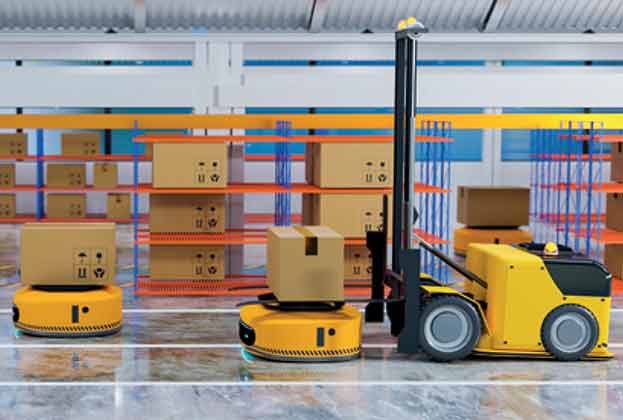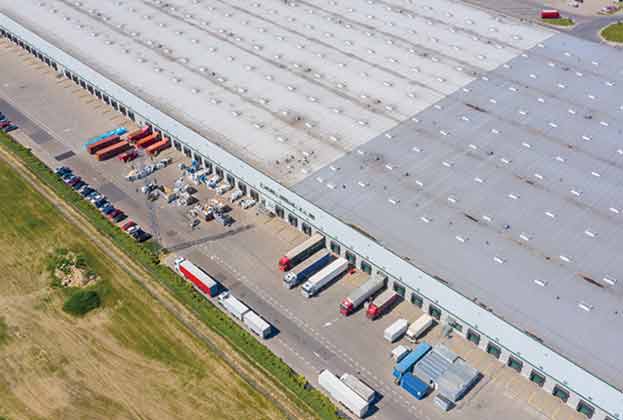There are any number of variables in play when adding a new site to a logistic network, but processes are in place to avoid ‘occupier’s remorse’. As Simon Dixon* explains
The current market for logistics property is as hot as it’s ever been, with limited supply and high demand, there is significant pressure on rents to increase. That’s the simplistic version that the property market likes, the operational reality is somewhat different…
When adding a new site to a logistics network, or choosing to move to a new site, the number of variables can be overwhelming. It is, therefore, unsurprising that some businesses choose to base their selection on evaluating fewer variables, particularly when the lead-time for having a new facility can be a pressing factor.
However, to avoid ‘occupier’s remorse’, it is only through the forensic testing of all the variables that occupiers can be confident in their selection and its associated likely future cost base.
The table below shows the typical categories of influencing factors. It provides a typical spectrum, although the precise sequence will vary for different occupiers, for the level of influence occupiers have over each of the factors.
In the section below (The X factors), the headings are the more specific variables that we typically use to evaluate a range of potential locations. It is only from building a complex model where each of the variables can be adjusted to represent the likely actual costs for a given site, that a comprehensive evaluation can be completed.
In many cases, it is difficult to give a variable a precise value, as it could change over time. This is where combining future scenarios, with a range of locations, is needed. This can generate many cost scenarios for a site, but once the likely extremities of the cost range are known, it is easier to make decisions with confidence. In many cases, the selection of a site is done because of how the variables manifest themselves at a moment in time. The same piece of analysis two years later could generate a different result.
The X factors
Some examples of the detail around particular variables:
Labour availability vs requirement
Pre-Brexit, this was generally about pay rates as availability was only relevant to a few specific locations. Now, this is one of the greatest influencing factors. Low levels of appropriate labour availability starts to change the design of the warehouse’s processes. Increased levels of automation, including robotics, start to become more relevant to be explored. This, in turn, can start to influence the building specification and design. For example, more height might allow a higher density of product storage with an automated system. Floor slabs may need to be upgraded, and additional power requirements could be needed. Alternatively, if automation is not an option, a lack of labour may just eliminate a site from an evaluation.
Relative labour cost rate
The ongoing labour rate for a particular location generally follows the laws of supply and demand, over and above any minimum wage legislation. Highly competitive areas can see pay rates being as much as 20% higher than others. Research into the local job market for numbers of vacancies, time to fill, and relative pay rates of other similar employers can help identify what a likely pay rate is going to be for a given site. Coupled with labour availability, these factors can have the biggest impact of the viability of a location.
ESG credentials
Not that long ago, developers would come forward with potential ESG initiatives, present the return on investment, and have them rejected as ideas as they didn’t meet an occupier’s normal investment hurdle rate. Things have changed. Businesses are actively recognising that by installing PVs, rainwater harvesting and wind turbines, they can make a positive impact on the environment, customers’ perceptions of them, and lower annual operating costs. This theme is only likely to increase in importance given more recent energy cost increases.
Outbound transport cost per drop
With the increase in e-commerce, and with it an associated increase in customer expectations of short order to fulfilment lead times, many warehouse moves are predicated on businesses reshaping their supply chain to meet customer demand. A key part of this is the relationship between the fixed cost of a location and the variable cost of the transport associated with it. This is one of the most complex areas to model when evaluating a location. Key inputs into the calculation are typically: frequency of delivery, cubic size and weight of drop, lead time expectation, vehicle type to be used, density of delivery locations, time per delivery drop, number of drops per driver/van shift, and road network type.
- Simon Dixon is the founder and CEO of supply chain and logistics consultancy Hatmill
Read the articles within Spotlight: The affordability of warehouse rents below.
.jpg)


